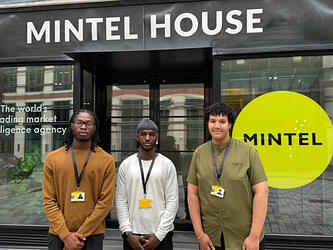Putting everything into promotions risks unbalancing the marketing mix
New research from the British Promotional Merchandise Association says that half of the British public have taken action after receiving a promotional product, compared with only 19% after seeing TV advertising, 11% for online advertisement, 10% for print and 9% for direct mail. Promotional products are also considered the least annoying by consumers.
But what does this actually tell us and are there lessons that brands can draw as a result? First, the top line shouldn’t really come as a surprise to most of us. It merely underlines the fact that people love free stuff and that in a world of virtual complexity and interactive communication, the brute simplicity of a classic marketing approach can still cut through.
The other caveat we would add is that consumers, generally, ALWAYS ask for free samples. It shouldn’t be a surprise they claim this to be the most effective form of promotion, because it is tangible and they are aware of the link between getting a sample and then making a decision to purchase. You don’t necessarily rush off to the shops the moment you see an ad on TV but it will subconsciously warm you up to that brand next time you’re in the supermarket. And a promotion might lead to a very short term response whereas advertising is more likely to build brand perceptions over the long term.
Given we know that other forms of marketing work, often at a more subconscious level, we would caution that research used to identify (a) what sorts of promotional strategies brands should adopt and (b) what has been effective, need to take account of the unconscious effects of different comms strategies. This will range from observational qualitative approaches which explore the effect that a range of communications, media etc, have on people’s behaviour, perhaps over time, to quantitative work which uses behavioural economics frameworks to cut through what people claim, to identify what they are likely to actually do.
We should also be careful in research not to equate likeability with effectiveness – e.g. before the now familiar approach to Cillit Bang advertising became all post-modern and iconic, consumers just found it plain annoying – but it worked!
Promotions are also rarely used in isolation and are usually part of a wider marketing mix. If I’ve seen an ad for Cereal X and I get given a sample at the same time – it’s more likely a combination of the two that leads me down the brand bonding route. This makes it problematic to genuinely measure the effectiveness of a promotion quantitatively or try and disentangle it from a wider campaign mainly because few people ever claim to have seen/experienced the promotion and if they had it was mixed up with a multitude of other brand touchpoints.
Brands, for example, which use digital and social platforms most effectively, are those who do so to engage with their target market and reward users for their time. Promotions may deliver short term spikes, but persistence is the key to sustainable relationship-based marketing. This means combining engagement with measuring RoI as far as possible and then repeating if successful.
That’s not to say promotions aren’t effective. As well as getting a product into people’s hands they can also work to build good feeling towards a brand – consumers are getting something for free. And that is probably the real message here – marketing these days is much more of a dialogue with consumers – consumers don’t want to just be told to buy something, more and more they expect something in return.

We hope you enjoyed this article.
Research Live is published by MRS.
The Market Research Society (MRS) exists to promote and protect the research sector, showcasing how research delivers impact for businesses and government.
Members of MRS enjoy many benefits including tailoured policy guidance, discounts on training and conferences, and access to member-only content.
For example, there's an archive of winning case studies from over a decade of MRS Awards.
Find out more about the benefits of joining MRS here.












0 Comments